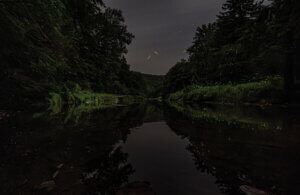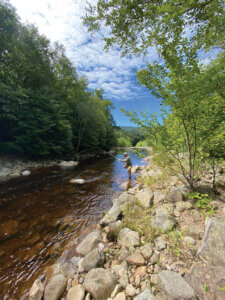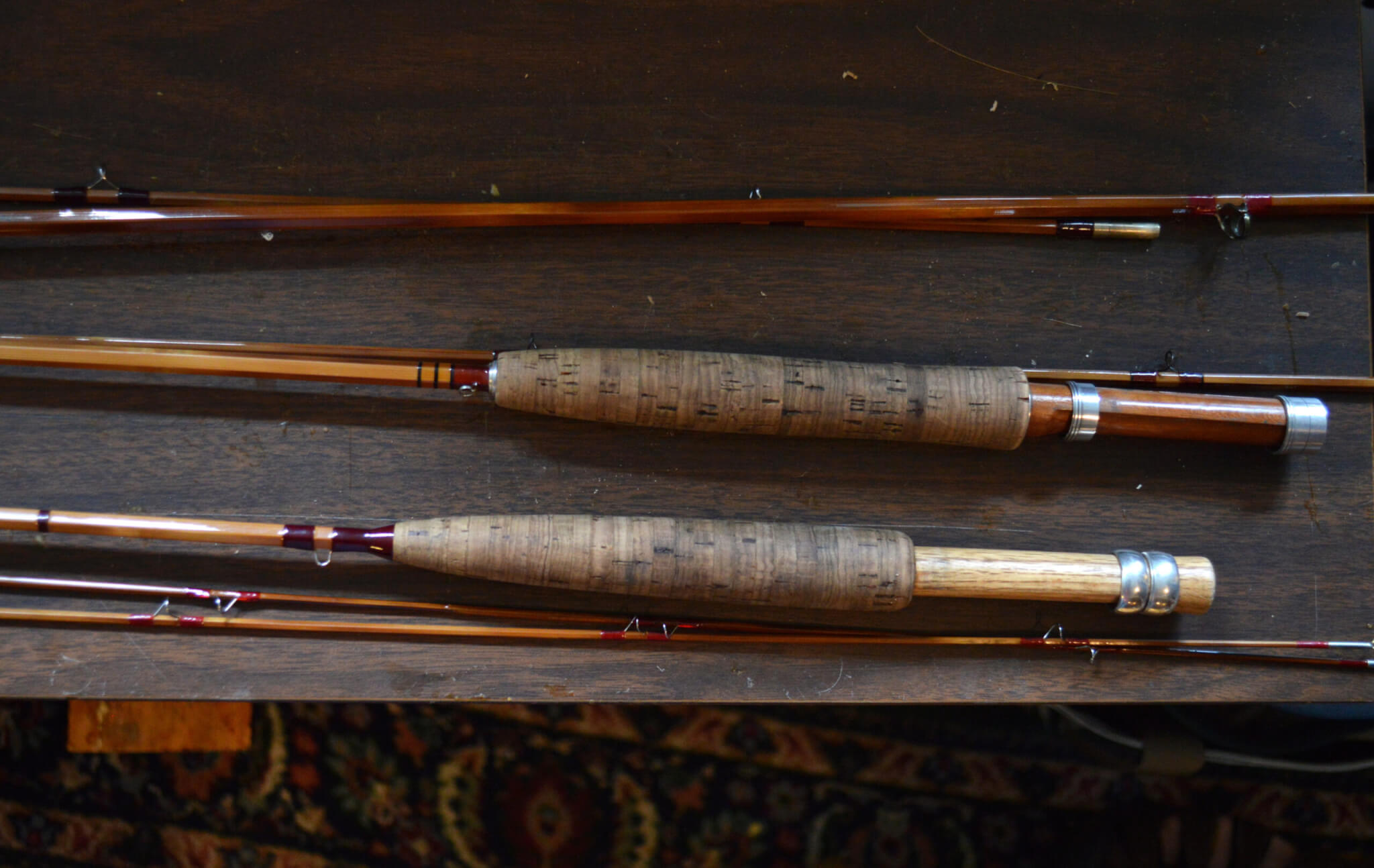
A handmade rod introduces everyday anglers to the joys and challenges of fishing with bamboo.
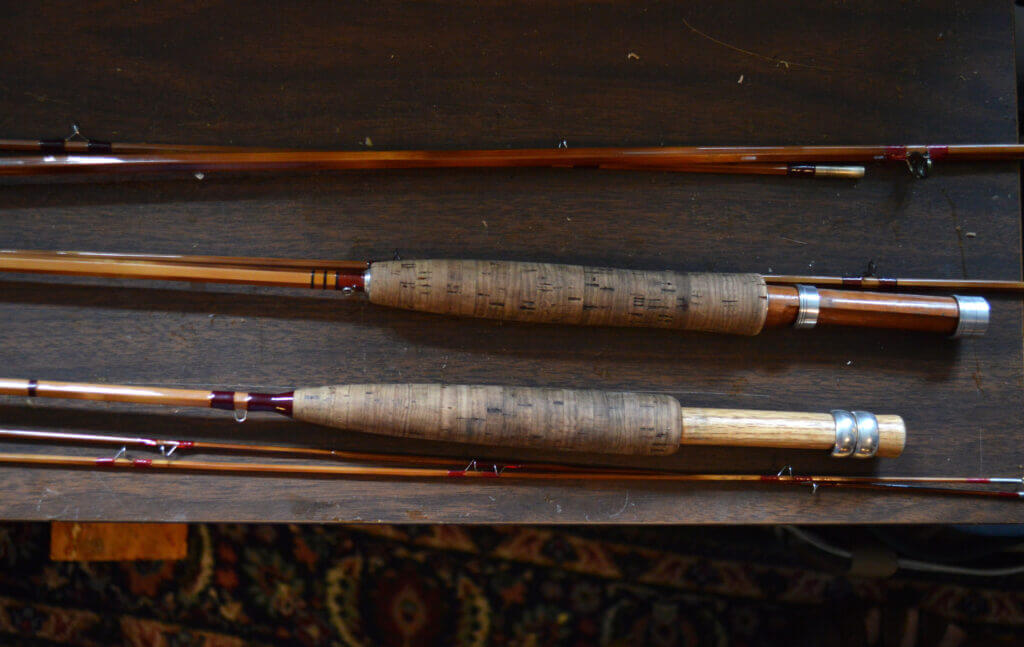
Don Crum ties his own flies. It’s a skill he learned as a boy growing up in Mingo County and something he’s proud of—knowing that his fly floating on the water for just a few seconds is enough to fool a fish.
For months, even years at a time, tying flies was as close as Crum came to wading into a river and casting a line. He’d sit at his dining room table after his wife, Carol, went to sleep, hunched over his tools, a light shining on his fly-inprogress, a short reprieve from his 24/7 role as Carol’s caretaker.
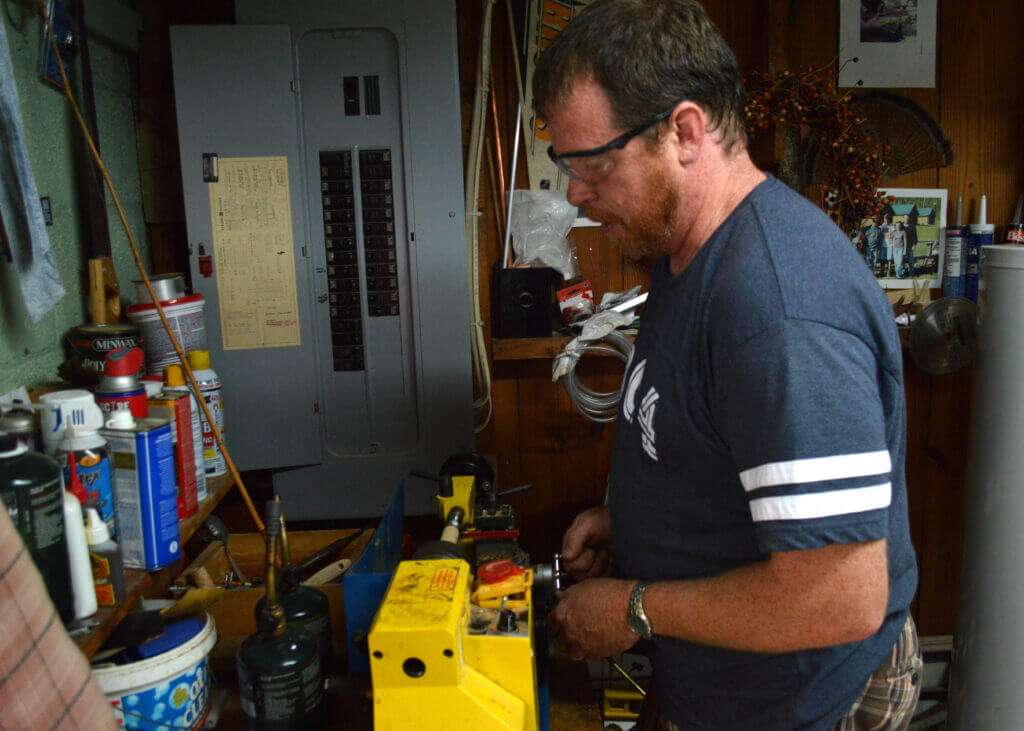
photographed by Zack Harold
For the last 10 years of her life, Crum was Carol’s chef. Her late-night grocery store runner. Her bed maker. Her legs. Carol suffered from a hereditary kidney disease, IgA nephropathy. It caused her other organs to start to fail. It left her bedridden. And it made her final years difficult.
Through it all, Crum kept tying flies into the night as a way to ease the stress of watching his spouse slowly die. After completing a new, colorful fly, he would place it in his gray tackle box and close the lid, a hidden symbol of a luxury he wasn’t willing to take, for it meant he would have to leave Carol’s side.
Carol died in 2014. She got double pneumonia and her body wasn’t strong enough to fight it. As Crum learns to wade into life without her, he’s finally getting back to the river, with the help of his hand-tied flies and a very special rod.
The Makings of a Mongrel
Lee Orr stores scraps of Tonkin bamboo behind his couch. There’s no way he’d throw out the high-end material after it traveled all that way from Southern China to his basement workshop on Charleston’s West Side. But, for a long time, Orr would not use the scraps. He’s a craftsman of traditional bamboo fly rods, and tradition holds that rodmakers should use material from only one stalk, or culm, of bamboo to make each rod—and the scraps left from one culm after the first rod is made aren’t enough to make a second.
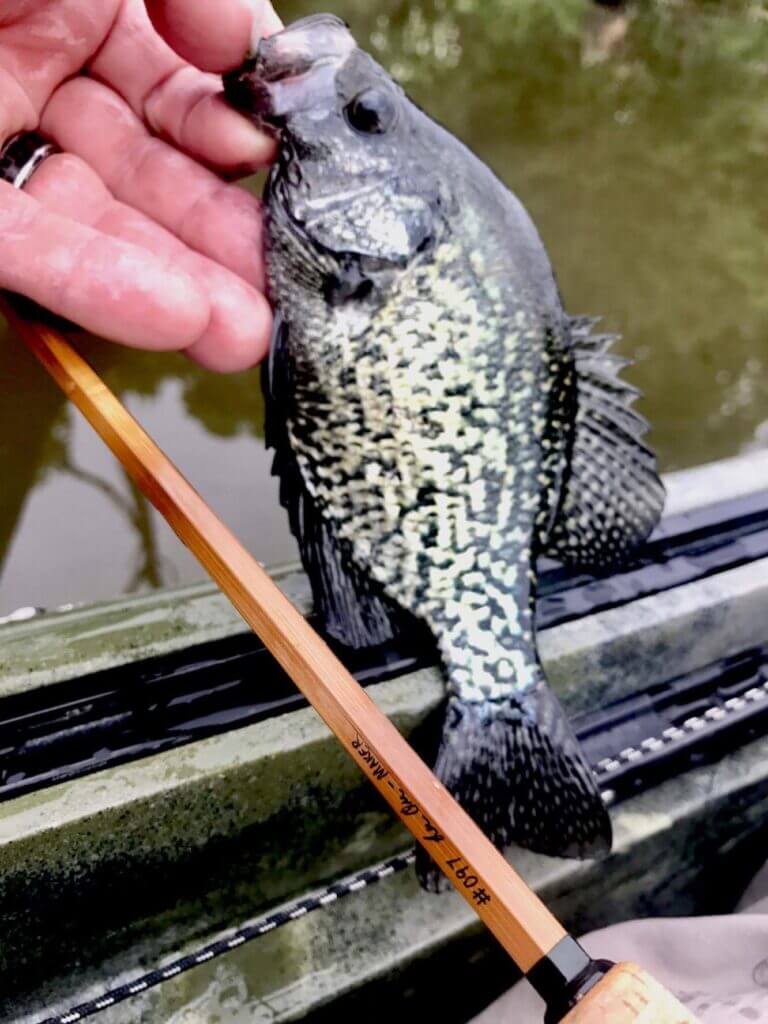
photographed by Zach Adkins 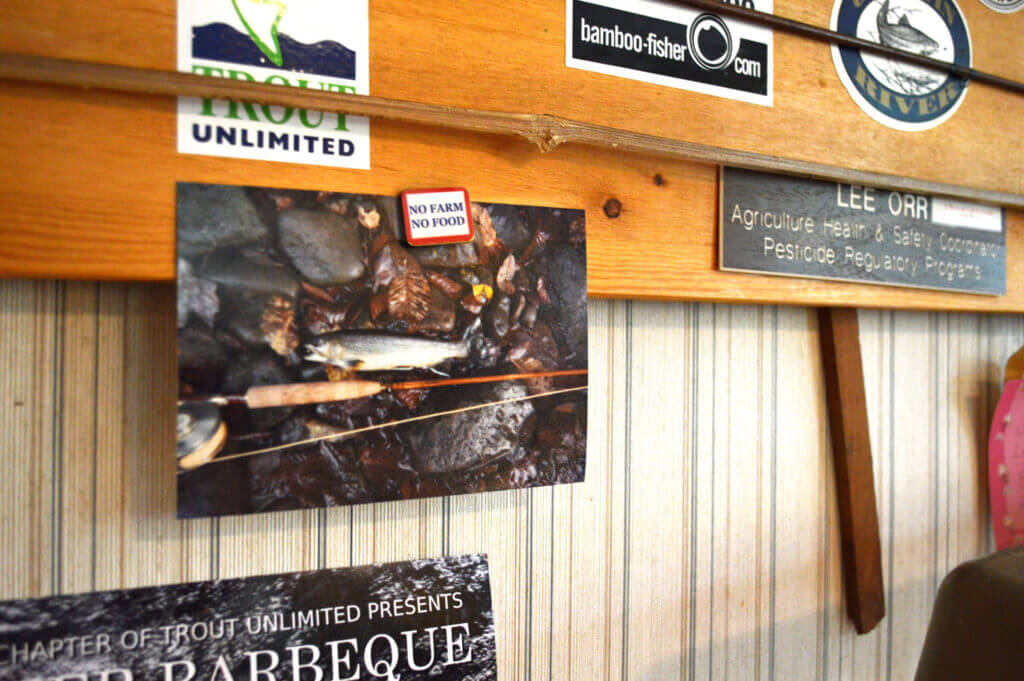
photographed by Zack Harold
Orr breaks down each culm by guiding a dull blade into the bamboo’s grain. He splits the hollow tube lengthwise, after heat-treating it with a torch, into quarter-inch-wide segments. He picks six strips for the butt section of the rod and six more for the thinner tip section.
Orr then lays each section of the rod on lines of masking tape with the strips sitting side by side. He smears wood glue down the length of the strips and rolls the tape together. He winds thread around the bundle, peeling the tape back as he goes, then unwraps the thread after the glue has dried. The segments are now bonded together into one solid piece.
After all that, any leftover material gets tossed onto the pile behind the couch where Orr’s wife, Asley, likes to watch TV at night.
Since he started making bamboo rods more than 10 years ago, Orr has slid more and more pieces of the dense, durable material to its regular resting spot. He’s given some away to friends wanting to try their hand at the craft. He’s moved giant bundles to his dad’s house for storage. But he never used the leftover bamboo to make a rod—until last winter.
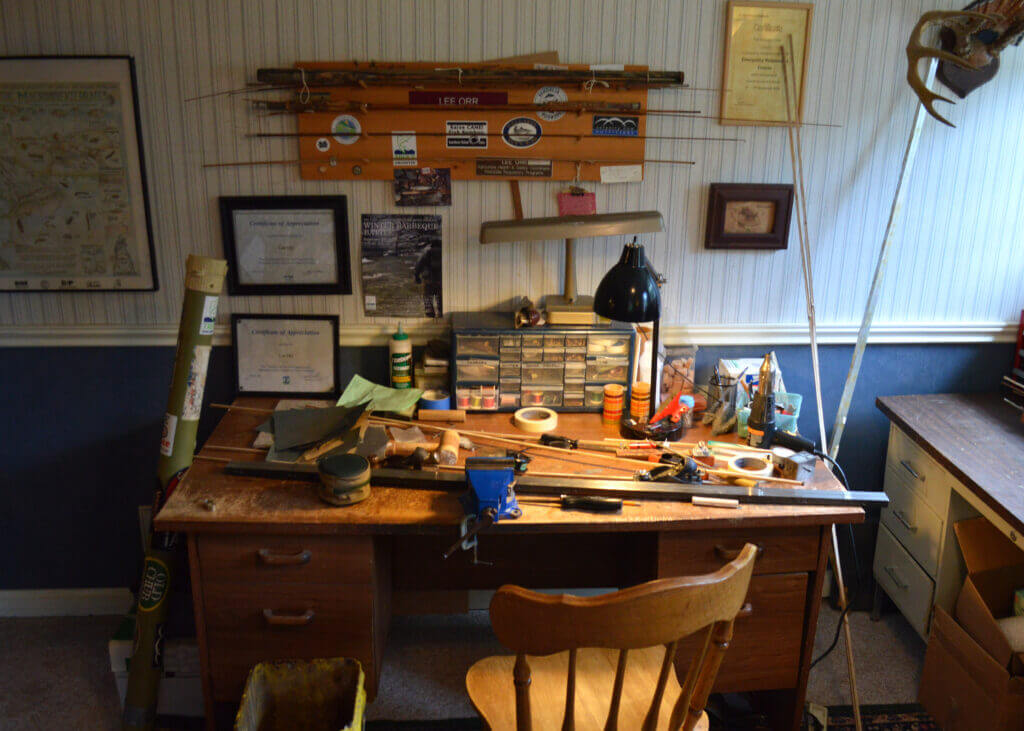
the basement of his Charleston home.
photographed by Zack Harold
Instead of starting with a new, full culm of bamboo, Orr gathered up some scraps from past projects and— along with some line guides, an old aluminum ferrule he bought on eBay to connect the butt and tip sections
of the rod, and champagne corks he boiled down to form a handle—turned them into a fly rod he calls the 304 Rambler. “It’s a mongrel kind of thing,” he says.
Most of the customers for Orr’s handcrafted rods, which he sells under the moniker 304 Rod Company, come by word of mouth. And most of that word of mouth is passed around the Mid-Atlantic region. Why not try to generate a wider buzz, Orr thought, by getting the Rambler out of the region and into the hands of some faraway anglers?
He wrote a post about the rod on 304 Rod Company’s Facebook page, to see if anyone wanted to take it for a spin. And boy, did they ever.
Back to Basics
Zach Adkins fishes for about every species that swims. He doesn’t limit himself to one method, but uses a mixture of it all. Bait catchers. Spin gear. Fly rods.
He grew up in Lincoln County with the Guyandotte River running behind his house. He headed to the river every day after he got out of school, learning when to use different baits, what to do when you’re fishing in shallow water, and the best way to draw in a line.
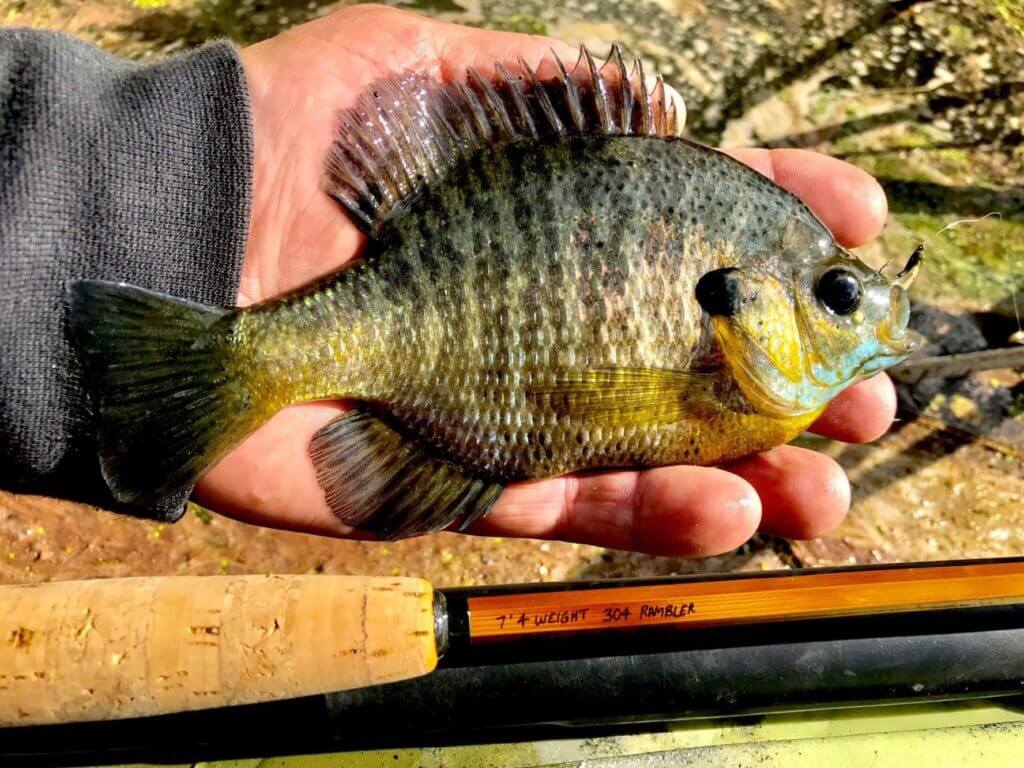
Zach
Adkins caught this
bluegill during his
time with the rod in
Grant County.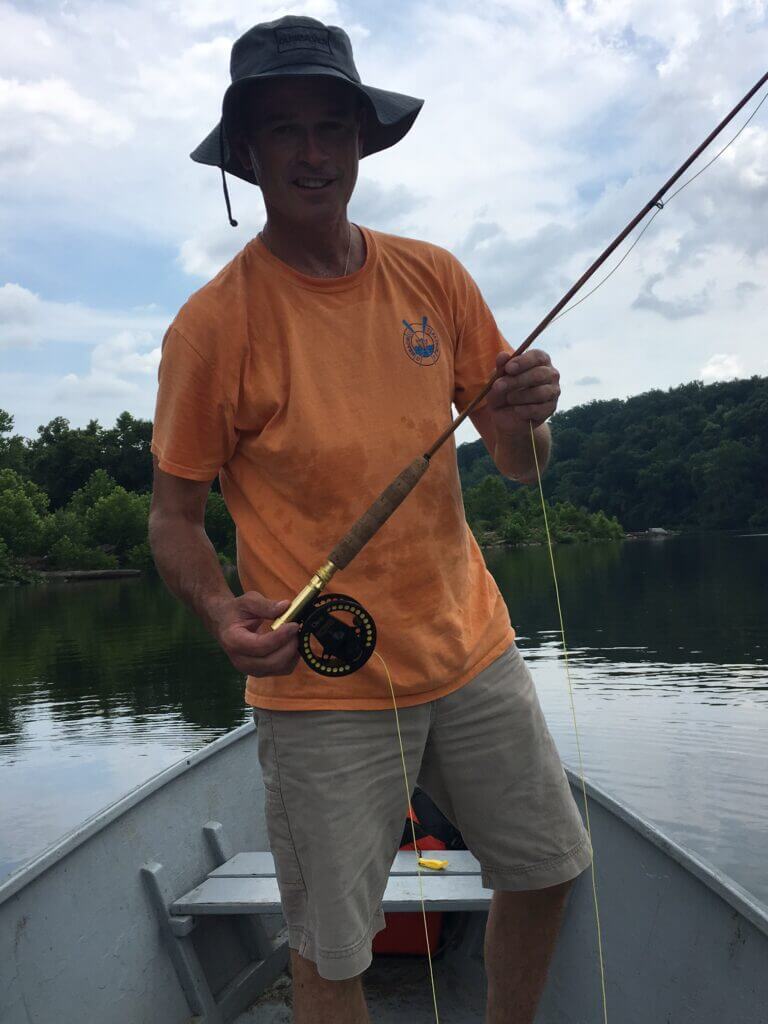
Chris
Wood, president
and CEO of Trout
Unlimited, tests
out the Rambler by
fishing for gar in the
Potomac River.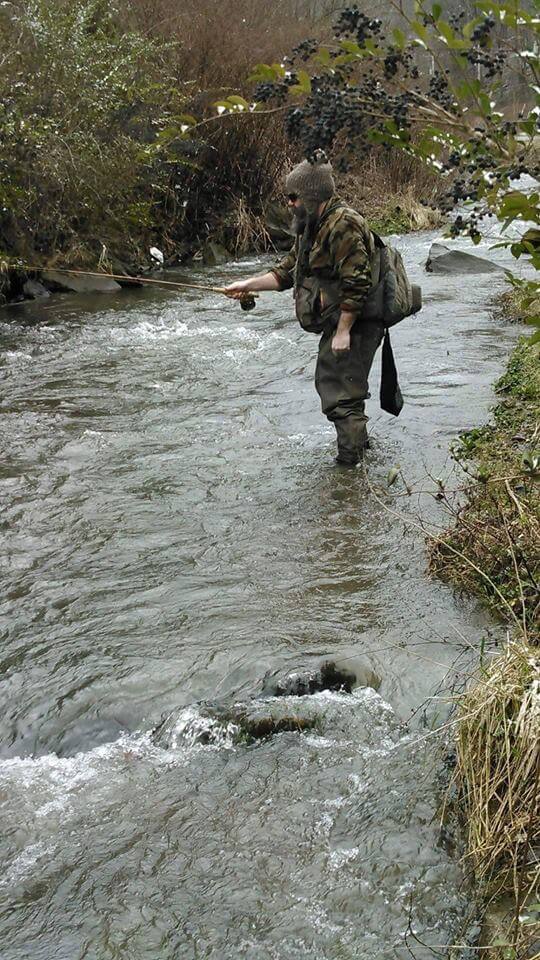
Chad Burrall
of Wheeling was
the first angler on
a long waiting list
to receive the 304
Rambler. He took
it to fish Elkhorn
Creek in McDowell
County.
But after working to perfect all those skills, casting with the 304 Rambler sent him right back to square one.
The first time he practiced at a pond near Petersburg, in Grant County, Adkins drew the line back and expected it to cast about 50 feet in front of
him. It only flew 20. The fast-action graphite rods he usually used are stiff and quickly snap back to straight, and that helps cast the line farther. Bamboo rods bend as they are cast, so both the weight of the rod and the
weight of the line contribute to the cast. It amplifies your mistakes and in that way forces you to correct your casting stroke.
As an angler so adept at a variety of fishing methods, Adkins didn’t take his failed casts with the Rambler as a blast to his ego. He viewed them as an opportunity to learn. “I did a little self-evaluation, something I had never really done. I paid attention to my hands and fingers and wrists and elbows,” Adkins says.
Working with the Rambler forced him to slow everything down, every back cast, every flick of the wrist. And once he had learned those lessons, it was time to send the 304 Rambler to the next name on the waiting list.
True to its name, the Rambler has now traveled up and down the East Coast from West Virginia to Tennessee back to West Virginia and on to Washington, D.C. It’s graced the hands of avid anglers giddy for a chance to use one of Lee’s handmade creations and learn from their mistakes.
Returning to the River
When Don Crum returned to the river a few months after Carol’s death, he was met with memories of her. He could see her in his mind, standing upstream, holding her fishing pole but not paying attention to it. Her eyes would instead be watching him as he worked his line forward and back, forward and back, before placing his cast.
These days, Crum no longer sees images of his late wife when he wades into a stream. Now he’s present. He focuses on his fly, one he made at his dining room table, and what it must look like to the fish he’s stalking.
He had never held a bamboo rod before the 304Rambler arrived at his door. They were too expensive, Crum thought, to add to his collection. And besides, he’d seen too many faithful, sturdy rods in his 60 years of fly fishing just, one day, break. He thought he’d save himself the heartache.
When the Rambler arrived he took it down to the river a handful of times, fishing for rainbow trout. He appreciated the time Orr had spent on the details, making sure the guides were perfectly matched and the reel seat was balanced. He could feel its lightweight body in action, how sensitive it was to his touch.
Crum says the 304 Rambler is one of the best rods he’s ever used. He caught a few fish every time he used it. It wasn’t the rod itself that brought success, of course. It’s what the rod did for him—bringing him to a place of clear concentration where the flick of a wrist, the cast of a line, and path of a hand-tied fly were all that mattered.
There, in the water, he was able to fall into that comforting, quiet peace he can’t seem to find anywhere else.
This story was originally published in the October 2017 issue of Wonderful West Virginia. To subscribe, visit wonderfulwv.com.
written by Anna Patrick



